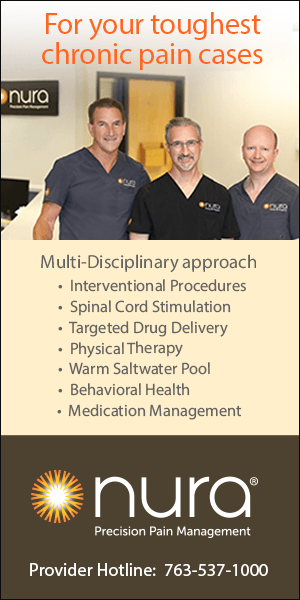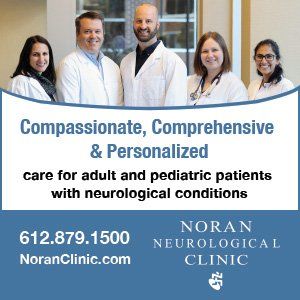ccording to the Administration for Community Living (ACL), an operating division of the U.S. Department of Health and Human Services, there is an ongoing need for research that can improve services and outcomes for people with spinal cord injury (SCI)–research that can improve health and function, community living and employment. ACL statistics indicate there are approximately 296,000 individuals living with SCI in the United States; the average age of injury is 43.
cover story two
Treating Spinal Cord Injuries
Developing a new model of care
BY LESLIE MORSE, DO
While SCI remains a low-incidence condition (estimates are that 17,900 individuals acquire new SCI in the United States each year), the ACL notes it has a profound impact on those who survive the initial trauma. In addition, increased survival rates and aging of individuals with SCI have created the need for new research-based information to improve clinical services, community support and a wide variety of outcomes for this population. The relatively low incidence of SCI increases the need for collaboration that involves investigators with the necessary expertise and combines the number of research participants who are available for testing interventions and for achieving other rigorous research aims and approaches.
Hospitalization and rehospitalization
Even though lengths of stay in hospitals (11 days) and acute care units (31 days) have declined recently, these injuries place a significant burden on the health care system, the patients and their families. The financial burden depends on the SCI itself and the age at which it occurs. Estimated lifetime costs of treating the injury range from $1.2 million to $5.1 million in 2019 dollars (these estimates do not include any indirect costs such as losses in wages, fringe benefits and productivity). The average yearly expenses (health care costs and living expenses) and the estimated lifetime costs that are directly attributable to SCI vary greatly based on education, neurological impairment and pre-injury employment history.
Since 2015, about 30% of persons with SCI were rehospitalized one or more times during any given year following injury. Among those rehospitalized, the length of hospital stay averaged about 18 days. Diseases of the genitourinary system are the leading cause of rehospitalization, followed by diseases of the skin. Respiratory, digestive, circulatory and musculoskeletal diseases are also common causes of rehospitalization. Despite improving mortality rates, individuals with SCI continue to be at increased risk of experiencing acute and long-term health complications, including secondary health conditions. Pain is a leading secondary complication after SCI and may significantly affect functional ability and independence, psychological well-being, ability to return to work and quality of life.
We view disability as an important aspect of diversity.
SCI Research
To improve the lives of those with SCI and to reduce the overall burden on the health care system from these injuries, the University of Minnesota’s Department of Rehabilitation Medicine led the process of receiving funding from the National Institute on Disability, Independent Living, and Rehabilitation Research (NIDILRR), in partnership with regional health care experts, researchers and consultants who have SCI (lived experience). As a result, we were one of 14 recipients in the U.S. that received $2.2 million over five years to improve patient care, research SCI and broadly share our findings. The research will be done under the auspices of a Minnesota Spinal Cord Injury Center of Excellence; patient care will be managed under the Minnesota Regional Spinal Cord Injury Model System (MN Regional SCIMS). In addition to the NIDILRR grant, our work is partially funded by the University of Minnesota (U of M) Medical School, the U of M Department of Rehabilitation Medicine and Regions Hospital. We also have the support of local and national community and consumer advocacy organizations.
MN Regional SCIMS service activities
The MN Regional SCIMS is a multidisciplinary continuum of care for people with SCI, including the following services: emergency medical, acute care, acute rehabilitation and post-acute care. We will serve individuals with traumatic SCI in Minnesota, North Dakota, South Dakota, Iowa, Wisconsin and Northern Michigan.
Our catchment area serves a wide geographic region of medically underserved areas. Therefore, a model system gives us the opportunity to meet the needs of this population and add diversity to the national SCI database. The system of care —and our research— will be built on a foundation of diversity, equity and inclusion. We welcome and value the voices and perspectives from all individuals with intersecting identities and lived experiences, and we believe those diverse perspectives significantly contribute to excellence in medicine and rehabilitation. We view disability as an important aspect of diversity and are committed to providing equitable access to resources for all employees, students and research participants. To better serve diverse populations, we have assembled a leadership team that is representative of women (65%), people of color (29%) and individuals from other traditionally underrepresented groups, such as those with physical disabilities (18%).
Our core model system activities, including clinical care and research, are focused on improving health and function after SCI and reducing or mitigating secondary health complications. Acute care rehabilitation services and ongoing health maintenance are essential for preventing and managing these complications. Care will be provided by the world-renowned resources of Courage Kenny Rehabilitation Institute (CKRI), Mayo Clinic, Regions Hospital and the University of Minnesota/M Health Fairview. Collectively, we provide the following services:
- Trauma care.
- Inpatient rehabilitation.
- Outpatient care.
- Health and wellness programs.
- Adaptive fitness and activity-based therapy.
- Vocational rehabilitation.
- State-of-the-art technology, such as neuromodulation, noninvasive magnetic stimulation, robotic devices and electrical stimulation, to support independent living.
Administration and collaboration
Our Executive Committee, led by myself and Dr. Kimberley Monden (UMN), oversees all project activities, including dissemination and implementation. The committee is comprised of the project directors, directors of clinical care, directors of research and representatives from the Community Engagement Committee, which includes individuals with lived experience, and leaders of SCI community organizations. Each member of this committee serves as a direct link to their site leadership and staff. We will include a rotating presence of individuals with lived experience from our Community Engagement Committee to ensure diverse perspectives from the SCI community. This committee meets quarterly to monitor progress toward project goals. Other committees include the Clinical Care Committee, the Data Management and Analysis Committee and the Research Committee.
Pain is a leading secondary complication after SCI.
Research projects
Our research efforts are aligned with NIDILRR’s long-range plan focus area of health and function, which is aimed at developing an evidence base for interventions that maximize the independence of people with disabilities. Consistent with that agenda, the MN Regional SCIMS’s research activities focus on maintaining health, minimizing hospitalizations and maximizing community living outcomes. Our team collaborates with local, national and international members of the SCI research community in many ways, including serving on society committees, advisory boards, journal editorial boards and various SCI-specific research groups.
One of our initial research projects will focus on identifying an effective pharmacological treatment for severe neuropathic pain in SCI–a primary issue affecting quality of life. Identification of an oral medication that is effective, safe and well tolerated would represent a major improvement in the clinical approach to this kind of neuropathic pain. Part of our research will be to identify and validate predictive biomarkers of neuropathic pain after SCI and response to pharmacological therapy. This work is innovative as it seeks to develop a new, mechanism-based pharmacological intervention for neuropathic pain in SCI.
Another initial research project seeks to answer the question: Is meeting the SCI physical activity guidelines associated with health-related and psychosocial outcomes? Since the development of the guidelines in 2011 and their refinement in 2018, no study has yet to demonstrate the health benefits of meeting the SCI physical activity guidelines versus not meeting them. To address this question, we will conduct a multi-site, cross-sectional observational study with the primary goal of determining whether SCI physical activity guidelines are associated with improved health-related and psychosocial outcomes. While cross-sectional in nature, the findings from this study will be used to design future clinical trials testing the health benefits of meeting these guidelines.
As a model system, we will also collect high-quality, representative longitudinal data that will increase the racial, ethnic and socio-economic diversity of the National Spinal Cord Injury database. This database is hosted by the University of Alabama at Birmingham, the source of all the SCI data cited in this article. We will also advance a robust research portfolio focused on increasing the health and well-being of individuals with SCI. To ensure that our research findings are widely available, we will implement a multi-year dissemination plan to share our clinical expertise and scientific results with multiple audiences, e.g., clinicians, researchers, individuals with lived experience, advocates, payors, and policymakers.
Dissemination of information
Enabling valuable research findings to be used in the field requires a strategic approach to dissemination rather than simply making stakeholders aware of the information. To effectively convey information, it is necessary to make the information accessible for end-users and to ensure the information and dissemination strategies fit the target audience’s needs. This is achieved by direct involvement of stakeholders in planning and implementing these strategies.
We will use Integrated Knowledge Translation (IKT) guiding principles to ensure that our partnership with the community is relevant, useful and avoids tokenism. These principles were developed by a multidisciplinary group of SCI researchers, clinicians, people with SCI, representatives from SCI community organizations and funding agencies. They recommend that partners:
- Develop and maintain relationships based on trust, respect, dignity and transparency.
- Share in decision making.
- Foster open, honest and responsive communication.
- Recognize, value and share their diverse expertise and knowledge.
- Maintain flexibility and be receptive.
- Meaningfully benefit by participating in the partnership.
- Address ethical concerns.
- Respect the practical considerations and financial constraints of all partners.
Using the IKT guiding principles will ensure meaningful engagement of the right research users at the right time throughout the SCI research process. Our dissemination activities will be planned and executed by both our Executive Committee and Stakeholder Engagement Committee. Our dissemination vision is focused on multiple media through which we can best communicate appropriately tailored information with all our target audiences. We have included both a media/marketing specialist and medical writer in our dissemination strategy to ensure our communications are of high quality.
Conclusion
We expect the Minnesota Spinal Cord Injury Center of Excellence and the Minnesota Regional Spinal Cord Injury Model System to catalyze SCI work across Minnesota. It is the first step toward bringing together all these outstanding resources and expertise to operate as a team. It’s the way we will help improve outcomes for people with SCI. We welcome your participation and collaboration.
Leslie Morse, DO, is a physiastrist, department head, professor of rehabilitation and co-project director of the Minnesota Regional Spinal Cord Injury Model System Center. She also works with the U of M Medical School and M Health Fairview.
MORE STORIES IN THIS ISSUE


















